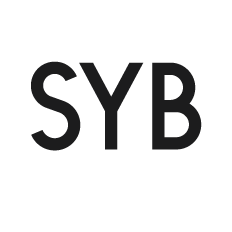29 June till 9 August 2011
THE UNIVERS OF OMROP FRYSLÂN
Review by Yasmijn Jarram
translation: Pieter de Bruyn Kops
Slow and silent the camera moves across a gray plane with white stripes. The stripes have names: Orionway, Mercuriusway, Apolloway, Icarusway, Saturnusway. Together they form the plan for an industrial terrain in Leeuwarden, the Netherlands. The image of the map is interchanged with that of a woman’s hand. The path that she draws onto a blackboard, with in the background some trees and buildings, follows the same direction that the camera follows above the map. Suddenly the crackling voice of a man sounds, the voice of Jan van Friesland, director of Omrop Fryslân. His radio station is located on the industrial terrain.
In short audio fragments, interchanged with total silence, Van Friesland tells about the television show “Doch it foar dyn doarp” (‘do it for your village’). The concept is simple: every day the camera is available for half an hour to Friesian villagers. The program is broadcast live, this means that the station cannot censor or control it. “If they wanted to have a porno show, well, we probably would have to send it”, says the director with an unmistakable Friesian accent. “We trust the people.” Most Friesians take the chance to show off some sort of talent that they believe they have, such as singing and painting. One such person took the opportunity to unapologetically streak in front of the camera.
Omrop Fryslân, with ‘Doch it foar dyn dorp’ in particular, acts as the point of departure for the aforementioned video work ‘Speaking into the Sky.’ Ruth Legg (Hampshire, UK, 1980) created the work during her stay in Kunsthuis SYB, for this she combined the explanation of Jan van Friesland with the images she made herself. ‘Speaking into the Sky’ forms a triptych with two earlier films (‘Dorianne Kransberg’, and ‘The biggest problem is the framing’, both from 2010), where the roll of individual creativity within a collective in an anonymous surrounding is studied. Furthermore, Legg’s focus on this specific television show generates a second contrast, namely that between amateur and professionalism. Although everyone can draw, paint or photograph; television is a professional medium to which the amateur usually doesn’t have access.
For the Friesians filming, this language is also unknown. The only thing they can use is their creativity. This is precisely what Legg goes in on: the creative act. It makes the difference between what is amateur and professional irrelevant; that qualification is not present during the creative process, exposing itself only in the result. That said, there is a notable difference: amateurs are not encumbered with the formal considerations that professionals must make. “They see the object, we see the whole context, you know?” explains Van Friesland. He who doesn’t speak the language can only rely on the image. Considering she doesn’t speak Friesian, Legg found herself in the same position. Just as the Friesian villagers, she could focus completely on the visual language.
Nonetheless television is so rooted in society that a few participants subconsciously used professional language: often looking back on yesterday’s episode, creating a time for reflection. The new television makers were obviously aware that they should reach out to an audience, as is the case with artists. These flows of personal creativity are sent into this world, or perhaps even into the universe in good faith. For this reason, the names of the streets of the industrial terrain, spoke to Legg. ‘Speaking into the Sky’ refers to the visual and conceptual as paths that are followed. The path is there for amateurs and professionals, even though the resultant position of the amateur is usually less clear at the start. The woman’s hand drawing visualizes the path as the most traditional form of creativity.
During the final presentation in SYB, Leggs’ entire video triptych was shown. The generous philosophical reflection of artist/researcher Rebecca Harris can be put aside, the work of Legg doesn’t need any retroactive theory to stand. ‘Dorianne Kransberg’ especially holds the essence of the triptych. The unseen protagonist of this work is the photographer Dorianne Kransberg, who works for the city archives of Amsterdam. Her photos, also products of individual creativity, treat the archives as anonymous historic documents. In a type of mini-collage a series of Kransberg’s black and white photos pass by, while Legg explains, in proper English, about Kransberg’s autonomous style. It becomes clear quite quickly that image and description do not go in parallel. The viewer is at first confused as the brain hastily attempts to have the eyes see what the ears are hearing. It is of no use, and the look confusion slowly returns to normal. Where a context is missing, every personal addition is allowed. Something the Friesian streaker already knew.
